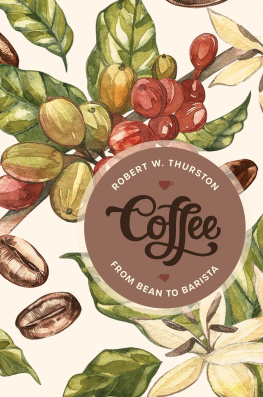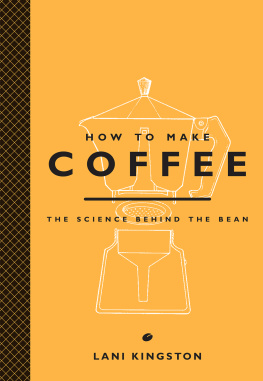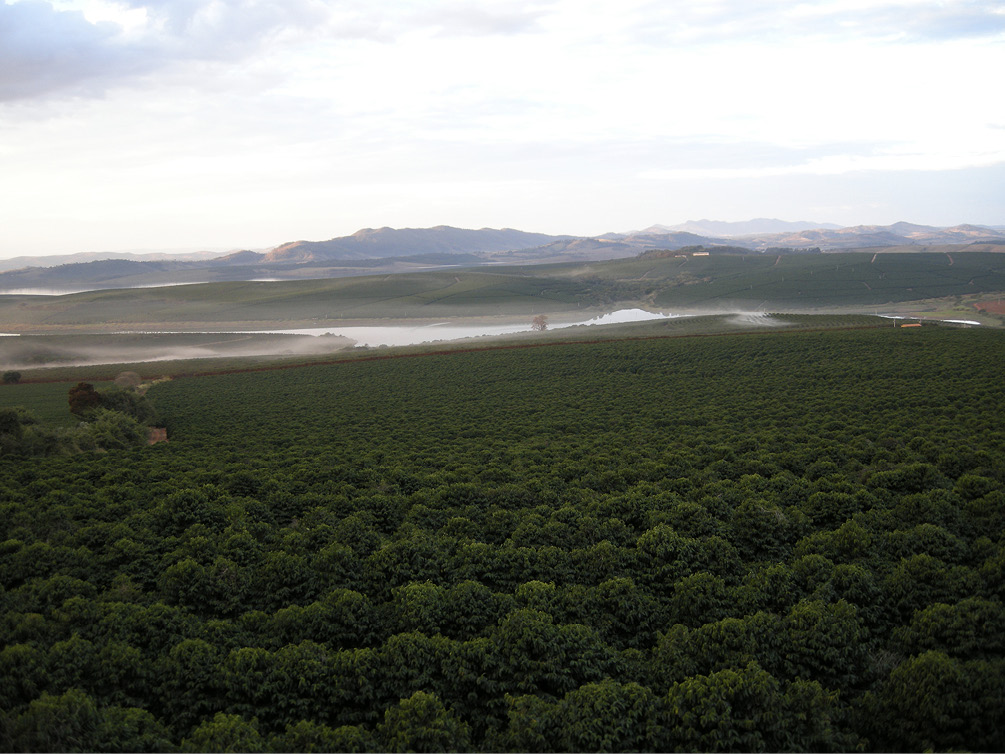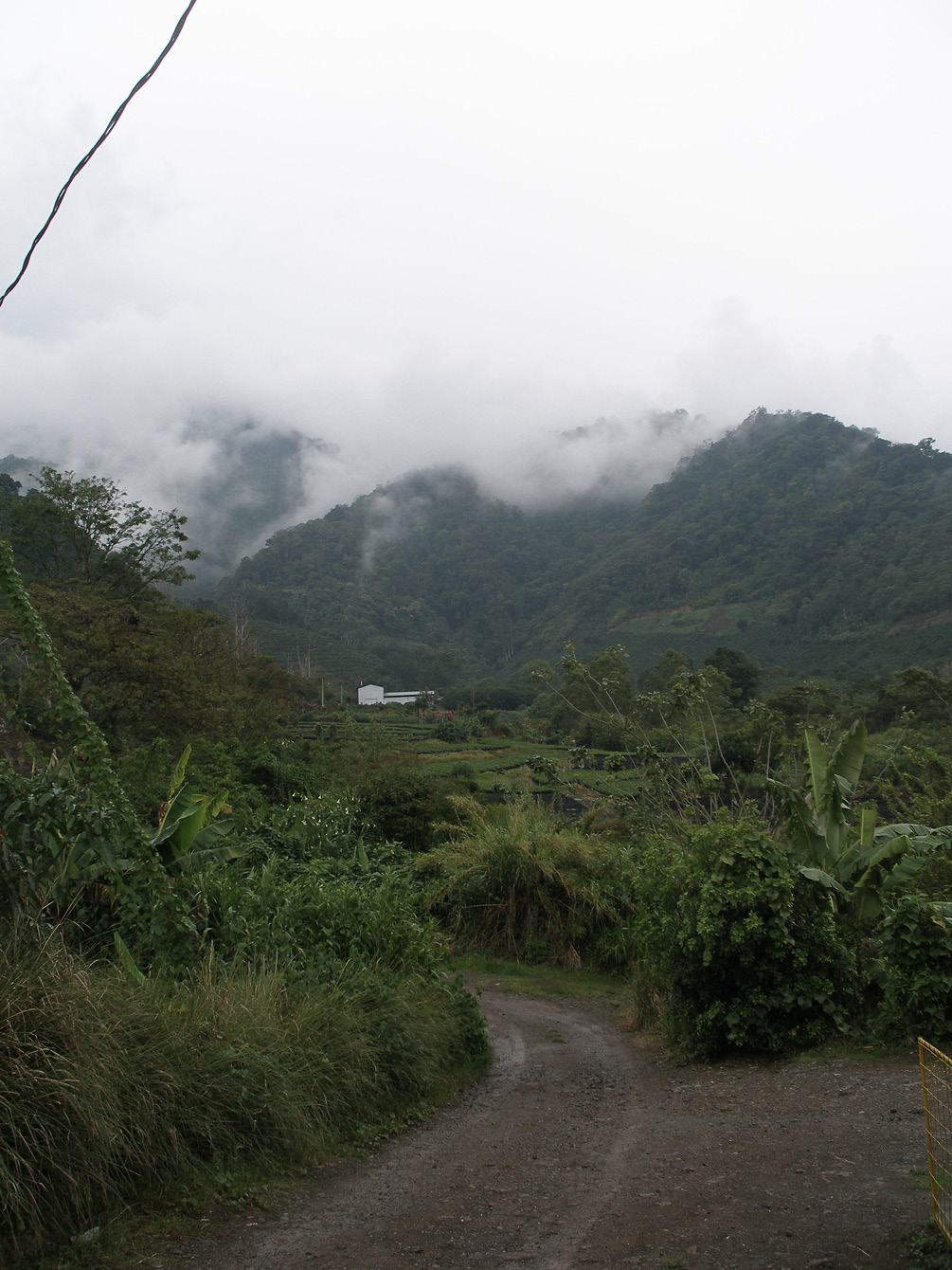From Bean to Barista
Robert W. Thurston
ROWMAN & LITTLEFIELD
Lanham Boulder New York London
Published by Rowman & Littlefield
An imprint of The Rowman & Littlefield Publishing Group, Inc.
4501 Forbes Boulevard, Suite 200, Lanham, Maryland 20706
www.rowman.com
Unit A, Whitacre Mews, 26-34 Stannary Street, London SE11 4AB, United Kingdom
Copyright 2018 by The Rowman & Littlefield Publishing Group, Inc.
All rights reserved . No part of this book may be reproduced in any form or by any electronic or mechanical means, including information storage and retrieval systems, without written permission from the publisher, except by a reviewer who may quote passages in a review.
British Library Cataloguing in Publication Information Available
Library of Congress Cataloging-in-Publication Data
Names: Thurston, Robert W., author.
Title: Coffee : from bean to barista / Robert W. Thurston.
Description: Lanham, Maryland : Rowman & Littlefield, [2018] | Includes bibliographical references and index.
Identifiers: LCCN 2018012460 (print) | LCCN 2018015579 (ebook) | ISBN 9781538108093 (electronic) | ISBN 9781538108086 (cloth : alk. paper)
Subjects: LCSH: Coffee. | Coffee industry.
Classification: LCC SB269 (ebook) | LCC SB269 .T54 2018 (print) | DDC 338.1/7373dc23
LC record available at https://lccn.loc.gov/2018012460
 The paper used in this publication meets the minimum requirements of American National Standard for Information SciencesPermanence of Paper for Printed Library Materials, ANSI/NISO Z39.48-1992.
The paper used in this publication meets the minimum requirements of American National Standard for Information SciencesPermanence of Paper for Printed Library Materials, ANSI/NISO Z39.48-1992.
Printed in the United States of America
For my friend and intellectual interlocutor, Carl Pletsch
Acknowledgments
S o many debts to so many people! I can hardly name them all here, but I especially want to thank and note the generosity of Professor Tonya Kuhl, UC Davis; Salvador Loucel and Hanna Neuschwander, WCR; Manuel and Christian Castaneda, Marcala, Honduras; Benjamin Paz Muoz; Lowell Powell; and Carlos Robert Pineda and Orieta Pinto of IHCAFE. I thank Chen Zhao for guiding me around Yunnan, China.
Emily Puro, editor of Roast Magazine , and her corps of readers for an article I wrote about recent research on coffee all helped get my thoughts about the science of the plant into decent shape.
For a while, I had a personal microbiologist, Professor Luis Actis of Miami University. He even made house calls! Thanks, Luis, for going over genetic markers and much more with me.
Thanks also to Susan McEachern of Rowman & Littlefield, who had faith that I would write this book and get it to her on time. Maybe someday we will meet; Ill buy the coffee.
My wife, Margaret Ziolkowski, has patiently listened to me talk about coffee for years. I have asked her to sip or actually drink many coffees and have always been eager to hear her opinions. And I have made those requests to a dedicated tea drinker! She read through the manuscript of this book and made many stylistic and substantial comments. OK, some of that was payback for my listening to her talk about Russian rivers and dams around the world.
My daughter Lara has been wonderful about running the Oxford Coffee Company and about engaging in a long give-and-take with me about how to roast beans and how to make drinks. She has been helpful to me in ways she may not realize. I very much appreciate her skill in working on the photos and other illustrations for this book.
Introduction
A nyone with the good fortune to visit a coffee farm has the opportunity to take in a host of powerful impressions. First is often striking beauty in a near-perfect climate. Sometimes you can look out over ridges stretching into the distance, down a steep and green valley, or even to the ocean. The air is clean and the temperature doesnt usually get above the low 80s Fahrenheit (2829 degrees Celsius), although the sun can be fierce. On a farm that is treating the earth well, birds are abundant, flowers line the roads, and in the right season, the coffee trees bear voluminous white blossoms.
My own favorite moment on a coffee farm was in Nicaragua years ago. I was in a group hiking up a steep trail, the lush foliage almost closing off the sky above. I felt thirsty but had no water with me. When I looked down, I noticed oranges lying on the ground. As I picked one up and peeled and ate it, a flock of small, bright green parakeets took off from the trees. I had to stop for a minute just to try to absorb the intensity of the experience.
Yet near that farm, as has happened so often and will happen again in coffee country, tragedy also marked the landscape. Nicaragua was torn apart in the 1980s by fighting between the leftist Sandinistas and the Contras, conservatives backed by the United States. People had been killed in the area around where I stood. Although the land was peaceful by the time I arrived decades later, several villagers who had lived nearby had starved in recent years, when the price they got for their coffee was abysmally low. Traditional life and values had seriously eroded there and elsewhere in Nicaragua, mimicking the slow destruction of the wooden houses by termites; at night the people watched awful Spanish-language comedy shows broadcast from Miami, and drank.
A similar story played out in Colombia in the 1980s and 90s. In that struggle, too, leftist guerrillas fought the government, again supported by the United States, until a truce was signed in 2016. The worst episodes of all, in a civil war that also followed the basic left-right script, devastated Guatemala for thirty years. Rebels, but above all the army, killed many peasants. Entire villages of Mayan Indians were wiped out.
Coffee terrain varies greatly. The top picture is relatively flat land on the Conquista farm, Minas Gerais State, Brazil. The second picture is from central Costa Rica. Large machinery can be run over flat land; where the hills are steep, coffee must be picked by hand.
Photos by Robert Thurston
The history of coffee has seen many dark times. Almost all coffee in Brazil, and much of the coffee in Cuba, was picked by slaves for more than a century until they were emancipated in 1888 and 1886, respectively. The Dutch forced their colonial subjects in what is now Indonesia to deliver coffee without pay from the late seventeenth into the twentieth century. Day-to-day unfree laborfor example, indigenous people forced to harvest coffeewas all too common in coffee lands until very recently. Reports from Brazil speak even today of forced labor on the farms, especially of young men essentially held prisoner by landowners and local police, who confiscate the workers documents and money.
As against all that, and even considering the negative impact of global warming, many bright spots characterize the coffee industry. Its total valueall the money paid around the world for coffee beans or drinks, and for wages and other direct costsremains open to educated guesses, but somewhere above $100 million annually is surely correct, and the figure is growing. Coffee is not, incidentally, the second most valuable commodity traded around the world. It is the most important tropical agricultural product, but it is way behind even other crops like wheat. If huge profits for coffee are out therefor instance, at Starbucks or the J. M. Smucker Company, which sells Folgers coffeefarmers may receive a pittance for their efforts, or nothing at all, as their beans may be ruined in cultivation, harvesting, or processing. Fifty million coffee farmers is a nice round estimate; they grow the plants on more than 10 million hectares, or 27.4 million acres. Many of the smallest producers live on the edge of disaster. Chapter 2 examines what is happening in coffee cultivation, especially its current challenges and the work to deal with them.















 The paper used in this publication meets the minimum requirements of American National Standard for Information SciencesPermanence of Paper for Printed Library Materials, ANSI/NISO Z39.48-1992.
The paper used in this publication meets the minimum requirements of American National Standard for Information SciencesPermanence of Paper for Printed Library Materials, ANSI/NISO Z39.48-1992.
